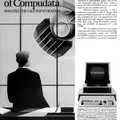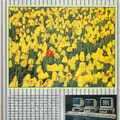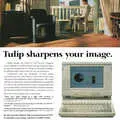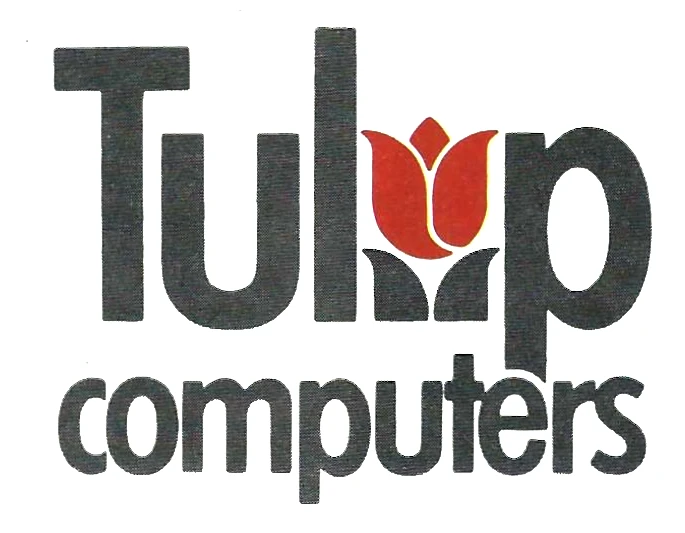
Tulip/Compudata Advert - 11th February 1984
From Personal Computer News
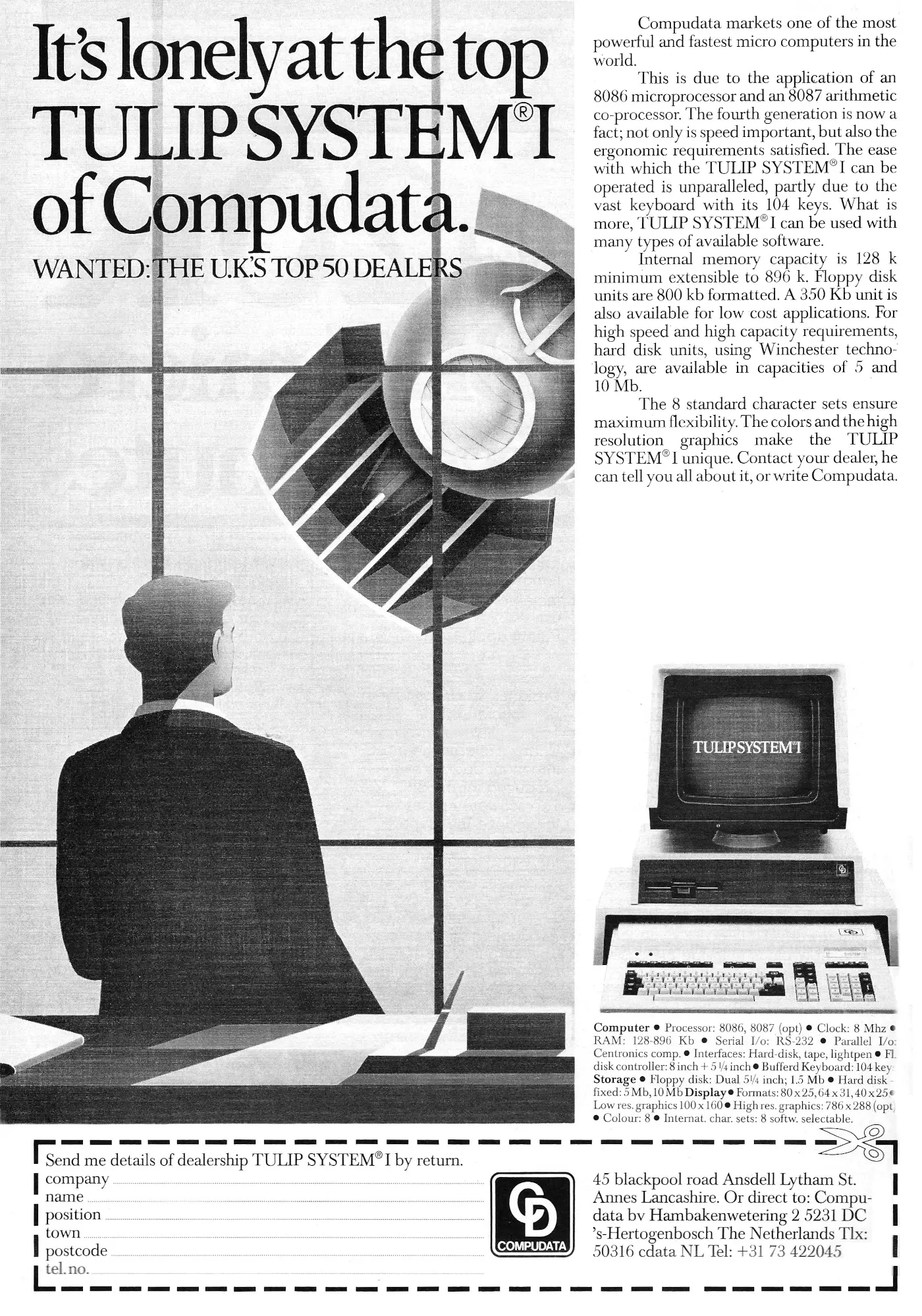
It's lonely at the top: Tulip System 1 of Compudata
Founded in 1979 as Compudata, Tulip Computers is worth a mention for a couple of reasons.
Firstly, when Exidy stopped manufacturing the Sorceror micro that Compudata had been importing in to Europe from the US, it didn't just give up on it and move on, but licenced the design and built them in the Netherlands - where the Sorceror had been particularly successful - up until 1983.
Secondly, it bought the Commodore brand-name in 1997, three years after Commodore had gone bust, even launching some Commodore-branded games systems in the mid 2000s.
The advert features the System 1 - a machine which was 100% compatible with the IBM PC on account of Tulip having literally copied the IBM, right down to the BIOS.
IBM clearly hadn't been too impressed by this, and was taking Tulip to court in the Netherlands over its infringement, even though the press was reporting that by this time Tulip had already switched to a different BIOS chip.
IBM's vice-president of personal systems, V Danianai reckoned that this switcheroo was "irrelevant" and that IBM would do all it could do to vigorously defend itself against infringement[1].
As well as the almost-identical IBM BIOS, Tulip's machine sported a true 16-bit CPU in the shape of an Intel 8086, as well as an 8087 maths co-processor - a trick that improved the perception of processor speed and which continued to be used right up until the introduction of the Intel 486DX in the mid 1990s.
It was also faster, at 8MHz, than the IBM XT, which had been released just a few months before[2].
It was distributed in the UK by Newport Technical Services, which was looking to appoint a network of dealers around the country. That was in August of 1983, whilst the advert above is still looking for dealers at the beginning of 1984.
The machine did review quite well, with Peter Jones writing in October 1983's Personal Computer World that:
"The Tulip System 1 is a nice computer. Forget the advertising hype that speaks of the Fourth Generation and carries on as if it's announcing the millenium. That wonderful it isn't. But it is a well designed, good looking (if a little overpowering) fast business machine with lots of nice features that should go down well in an office environment. It has an excellent keyboard, which makes it very suitable for word processing and it seems reliable".
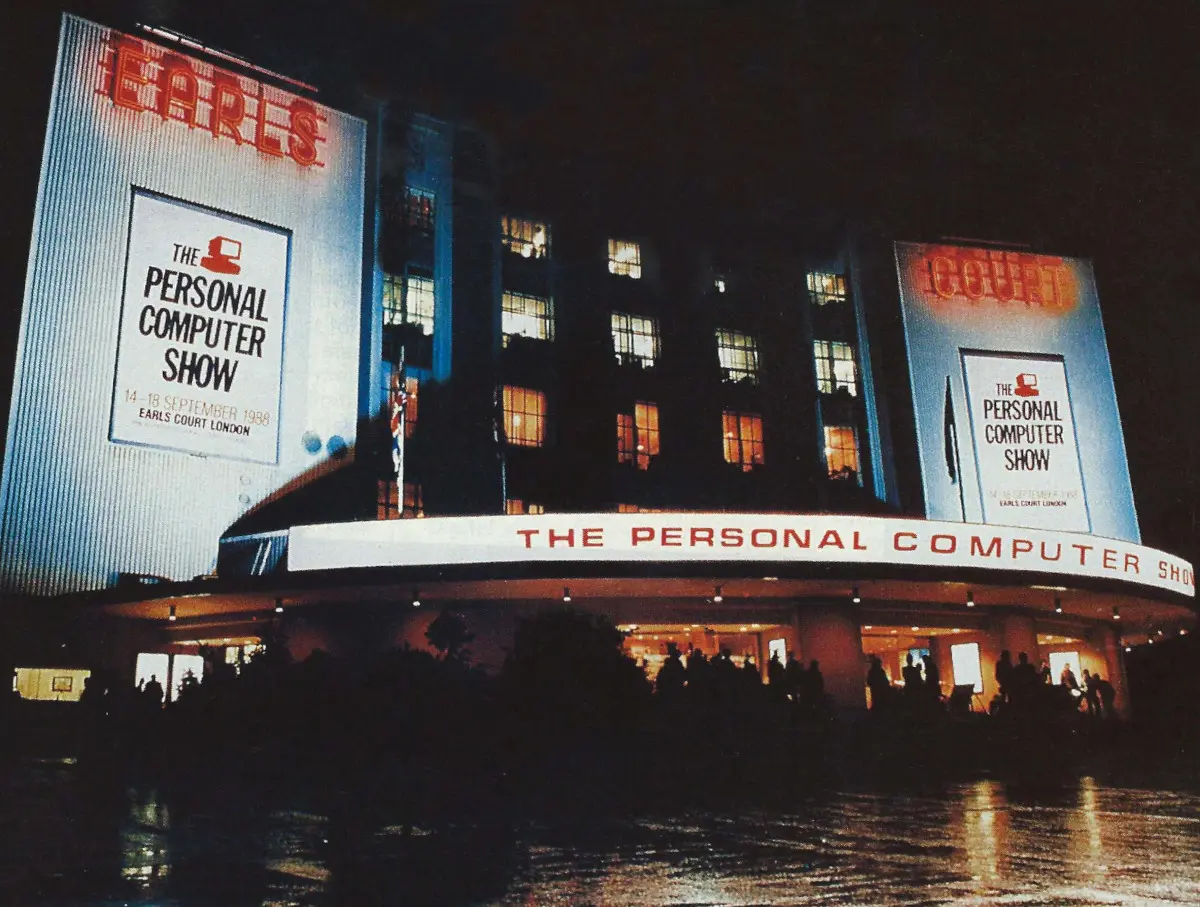
The 1987 Personal Computer Show at Earls Court, where Tulip was trying for the third time to crack the UK market. From Personal Computer World, August 1988
It was also considered quite competitive, at least considering home much came with it. It did have a custom marketing pitch for the UK market, with a separate disk unit - rather than the usual combined video/disk tower - which saved £700 and gave it a bundle price for an entry-level system of around £2,000 - that's about £8,830 in 2025.
By the end of 1987, Tulip was on its third attempt to crack the UK market, with a launch of IBM-compatible PCs at the Personal Computer World Show.
Tulip - which considered itself as "the second-biggest computer company in Benelux" - thought that it had been difficult the previous two times because the UK, apparently unlike the rest of Europe, "was a price-sensitive market".
The company had the stated aim of dominating the Tandon/Zenith sector, or in other words other IBM-compatible builders, rather than Big Blue itself[3].
Date created: 22 May 2014
Last updated: 11 December 2024
Hint: use left and right cursor keys to navigate between adverts.
Sources
Text and otherwise-uncredited photos © nosher.net 2025. Dollar/GBP conversions, where used, assume $1.50 to £1. "Now" prices are calculated dynamically using average RPI per year.
